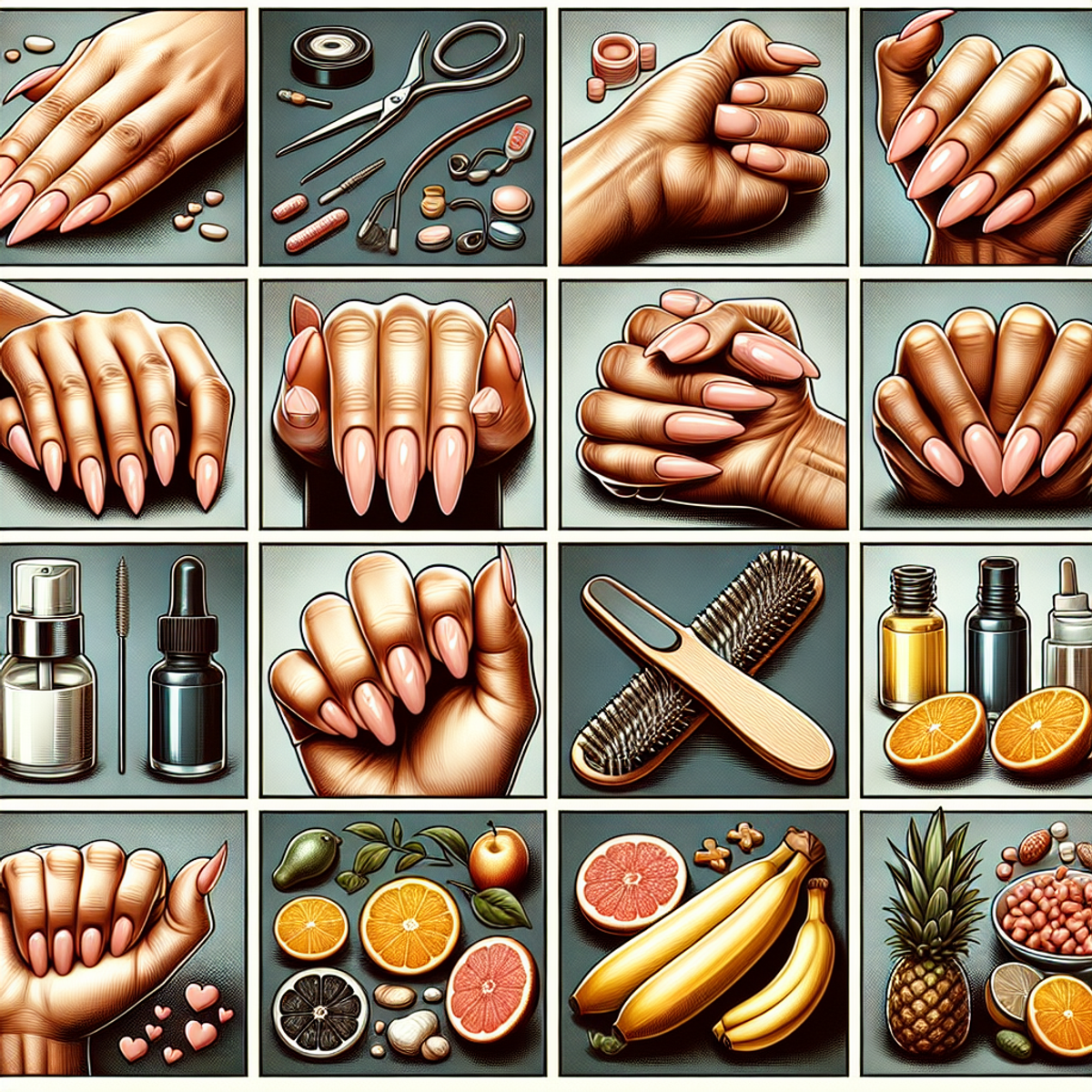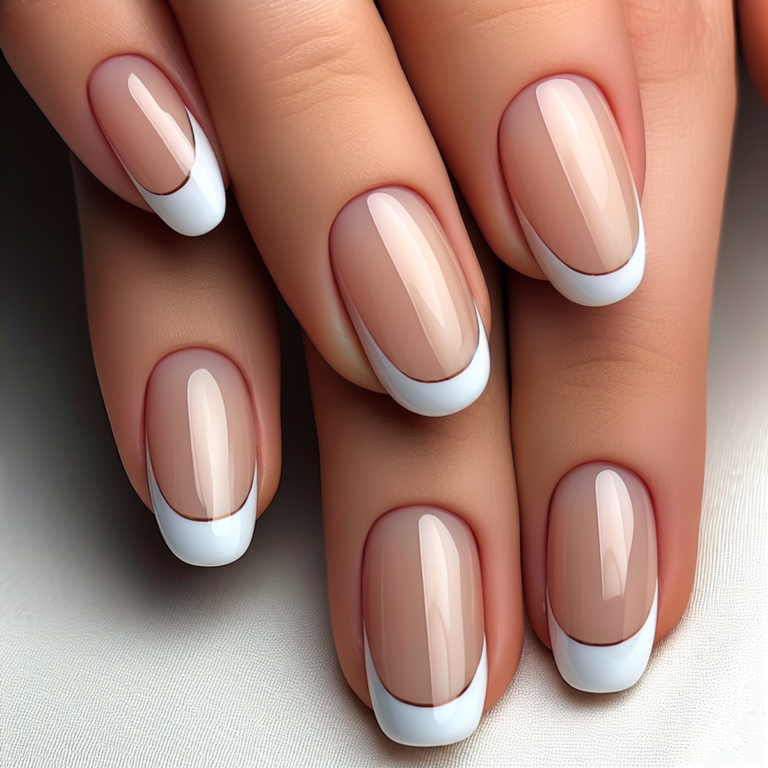How to Rehab Weak and Brittle Nails

Introduction
Weak and brittle nails can be a frustrating issue that many people struggle with. These nail conditions are characterized by nails that are easily prone to breakage, splitting, and peeling. While they may seem like a minor inconvenience, weak and brittle nails can actually have a significant impact on our overall hand hygiene and appearance.
Maintaining healthy nails is essential not only for aesthetic purposes but also for practical reasons. Our nails serve as protective barriers for our fingertips, guarding against potential injuries and infections. Weak and brittle nails compromise this important function, leaving our fingertips vulnerable to damage.
Additionally, the appearance of our nails can say a lot about our overall health. Brittle and weak nails may be an indication of underlying nutritional deficiencies or medical conditions. By rehabilitating weak and brittle nails, we not only improve their strength and resilience but also address potential underlying health issues.
Causes of Weak and Brittle Nails
Weak and brittle nails are a common problem for many people, and there are several factors that can make them weak and brittle. It’s important to understand these causes so that we can effectively improve nail health. Let’s take a look at some of the main causes:
1. Nutritional Deficiencies
Not getting enough of certain vitamins and minerals can really affect the health of your nails. Some key nutrients that you need for strong and healthy nails are:
- Biotin: Also known as vitamin B7, biotin is super important for making keratin, which is the protein that forms nails. If you don’t get enough biotin, your nails can become weak and brittle.
- Iron: When you don’t have enough iron in your body, it can cause your nails to be brittle. In some cases, it can even make your nails shaped like spoons!
- Zinc: Having low levels of zinc has been linked to nails that break or split easily.
2. Nail Trauma
If you’ve ever hurt your nails, then you know how much it can mess them up. Putting too much pressure on your nails or injuring the nail bed can really weaken them. Some common ways that people damage their nails are:
- Nail biting: When you bite your nails all the time, it can really mess up the way they grow and make them weak.
- Using nails as tools: Your nails are not meant to be used as tools! Using them to open things or scrape stuff off can cause them to break or get damaged.
3. Excessive Moisture Exposure
Believe it or not, having wet nails for too long is not good for them either. When your nails are constantly in contact with water, they become soft and more likely to break. Some examples of when your nails might get too wet are:
- Washing hands too much: It’s definitely important to keep your hands clean, but washing them too much can actually dry out your nails and make them brittle.
- Being in water a lot: Activities like swimming or having your hands in water for a long time can weaken your nails over time.
4. Underlying Medical Conditions
Sometimes, weak and brittle nails can be a sign of an underlying health condition. Here are some common ones that can affect your nails:
- Hypothyroidism: When your thyroid gland doesn’t work as well as it should, it can cause problems with your nails like brittleness and slow growth.
- Psoriasis: This is a condition where your immune system attacks your skin and nails. It can cause nail pitting (small dents), discoloration, and brittleness.
- Fungal infections: If you have a fungal infection in your nail, it can change the way it looks and feels. The nail might get thicker, crumbly, or even come off.
Tips for Rehabilitating Weak and Brittle Nails
Weak and brittle nails can be rehabilitated through a combination of nail care practices, dietary adjustments, and lifestyle changes. Here are some effective tips to promote nail strength and resilience:
1. Adopt a Comprehensive Nail Care Routine
- Avoid harmful habits like nail biting, picking at cuticles, or using nails as tools, as these can contribute to nail weakness.
- Use nourishing oils, such as jojoba oil or vitamin E oil, to moisturize the nails and cuticles regularly. This helps prevent dryness and brittleness.
- Wear protective gloves when handling harsh chemicals during household chores or work activities to shield your nails from potential damage.
2. Focus on a Balanced Diet for Nail Health
- Consume a diet rich in key nutrients that support nail health, including biotin (vitamin B7), iron, and zinc.
- Incorporate biotin-rich foods such as eggs, nuts, seeds, and sweet potatoes into your meals. Iron-rich foods like spinach, lentils, and red meat can also contribute to stronger nails.
- Zinc can be obtained from sources like pumpkin seeds, chickpeas, and cashews. Including these foods in your diet can help fortify your nails from within.
3. Avoid Acetone-Based Nail Polish Removers
- Educate yourself about the potential risks associated with frequent use of acetone-based nail polish removers, which can contribute to dryness and weakening of the nails.
- Consider using alternative options such as acetone-free nail polish removers or gentle nail polish removal techniques that minimize stress on the nails.
4. Implement Lifestyle Changes for Stronger Nails
- Stay hydrated by consuming an adequate amount of water daily to maintain overall nail health.
- Avoid excessive exposure to water, as prolonged immersion can lead to weakening of the nails over time.
By incorporating these tips into your regular nail care routine and daily habits, you can effectively rehabilitate weak and brittle nails for long-term benefits.
When to Seek Professional Advice
Weak and brittle nails can often be treated with simple lifestyle changes and at-home remedies. However, in some cases, these nail issues may be a sign of an underlying medical condition that requires professional intervention. It’s essential to know when it’s necessary to consult a healthcare provider for expert guidance. Here are some situations where seeking professional advice is recommended:
- Persistent nail problems: If you’ve tried various home remedies and nail care routines without seeing any improvement in the strength and appearance of your nails, it may be time to seek professional advice. A dermatologist or doctor can evaluate your nails and determine if there’s an underlying issue contributing to their weakness and brittleness.
- Changes in nail color or texture: If you notice significant changes in the color or texture of your nails, such as yellowing, pitting, ridges, or thickening, it could be a sign of a fungal infection or an underlying medical condition like psoriasis or thyroid disorders. Consulting a healthcare professional will help identify the cause and provide appropriate treatment.
- Pain or discomfort: If your weak and brittle nails are accompanied by pain, swelling, or redness around the nail bed, it may indicate an infection or injury. A healthcare provider can assess the situation and recommend appropriate treatment options.
- Nail abnormalities: If you have other nail abnormalities alongside weakness and brittleness, such as separation of the nail from the nail bed (onycholysis), clubbing of the nails, or unusual growth patterns, it’s important to consult a professional for a thorough examination.
When you visit a dermatologist or doctor for your weak and brittle nails, they may recommend various treatments depending on the underlying cause. These treatments can include:
- Topical medications: In cases where fungal infections are causing the weakness and brittleness of nails, antifungal creams or ointments may be prescribed to eliminate the infection and promote healthier nail growth.
- Supplements: If a nutritional deficiency is identified as the cause of weak and brittle nails, your healthcare provider may recommend supplements containing key nutrients like biotin, iron, or zinc to support nail health.
- Medical treatments: In some instances, underlying medical conditions may need specific medical treatments to address the root cause of nail weakness. Your healthcare provider will determine the most appropriate course of action based on your individual case.
Remember, seeking professional advice is crucial for accurately diagnosing and addressing any underlying issues contributing to weak and brittle nails. Early intervention can lead to better outcomes in your nail rehabilitation journey.
Conclusion
Rehabilitating weak and brittle nails requires consistent care and attention. By following a comprehensive nail care routine and making necessary lifestyle changes, you can promote strength and resilience in your nails.
Here are the key takeaways:
- Maintain a consistent nail care routine: Avoid harmful habits like nail biting and using nails as tools. Keep your nails clean and dry to prevent infections, trim them regularly, and moisturize with nourishing oils or lotions.
- Focus on a balanced diet: Include key nutrients such as biotin, iron, and zinc in your diet to support nail health. Foods like eggs, nuts, leafy greens, and whole grains are rich sources of these nutrients.
- Be mindful of nail polish removers: Acetone-based removers can be drying for the nails. Opt for gentler options or consider using non-acetone removers to minimize damage.
- Protect your nails: Wear protective gloves when handling harsh chemicals or engaging in household chores. Avoid excessive exposure to water, as it can weaken the nails.
It’s important to note that weak and brittle nails can sometimes be a sign of an underlying medical issue. If you’re experiencing persistent nail problems despite following these tips, it’s recommended to seek professional guidance from a dermatologist or healthcare provider. Early intervention can lead to better outcomes in your rehab journey.
Remember, maintaining healthy and strong nails not only contributes to overall hand hygiene but also enhances your appearance. Incorporate these tips into your daily routine for long-term benefits. Take care of your nails, and they will thank you with their strength and beauty!










